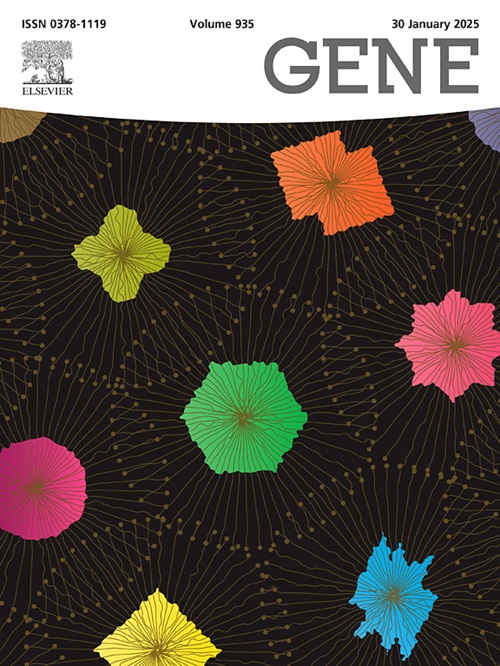RNA editing applied to cystic fibrosis: RESTORE can target G542X CFTR mRNA and revert the nonsense mutation
IF 2.6
3区 生物学
Q2 GENETICS & HEREDITY
引用次数: 0
Abstract
Background
Nonsense mutations in the CFTR gene are responsible for approximately 8 % of cystic fibrosis (CF) cases worldwide. The consequent premature termination of translation leads to the production of a truncated and non-functional CFTR protein. Despite the intensive research in the field, these patients cannot benefit from specific and approved therapies yet. To address this issue, in this study we evaluated a potential therapeutic strategy to overcome the nonsense G542X (UGG > UGA) mutation in the CFF-16HBEge human bronchial epithelial cells by restoring the full-length CFTR protein.
Methods
We applied the RESTORE (Recruiting endogenous ADAR to specific transcripts for oligonucleotide-mediated RNA editing) approach, based on specifically designed antisense RNA oligonucleotides (ASOs) to recruit endogenous ADAR (adenosine deaminase acting on RNA) enzymes. The ADAR’s recruitment to the target CFTR mRNA is expected to promote the deamination of adenosine (A) into inosine (I) within the premature termination codon (UGA). As the ribosome reads the inosine as guanosine (G), the stop codon could be recoded as a tryptophan (UGG), thereby allowing the synthesis of a full-length CFTR protein, albeit with a different amino acid.
Results
Our results indicate that in the CFF-16HBEge G542X cell line, the transfection of a specific ASO allows the rescue of the CFTR transcript and protein expression, compared to the untransfected mutated cells. Next generation sequencing of CFTR cDNA also confirmed the occurrence of the expected RNA editing outcome.
Conclusions
The obtained results suggest that the RESTORE approach might be explored as a promising strategy to treating nonsense mutations in CFTR, potentially contributing to novel therapeutic options for CF patients.
RNA编辑在囊性纤维化中的应用:RESTORE可以靶向G542X CFTR mRNA并恢复无义突变
背景:全球约8%的囊性纤维化(CF)病例是由CFTR基因无义突变引起的。因此,翻译的过早终止导致CFTR蛋白的截断和无功能的产生。尽管在该领域进行了深入的研究,但这些患者还不能从特定的、经批准的治疗中受益。为了解决这一问题,在本研究中,我们评估了一种潜在的治疗策略,以克服无意义的G542X (UGG >;通过恢复全长CFTR蛋白,在CFF-16HBEge人支气管上皮细胞中发现UGA突变。方法采用RESTORE (Recruiting endogenous ADAR to specific transcripts for oligonucleotide-mediated RNA editing)方法,基于特异性设计的反义RNA寡核苷酸(ASOs)来招募内源性ADAR (adenosine deaminase acting on RNA)酶。ADAR募集到目标CFTR mRNA有望促进过早终止密码子(UGA)内腺苷(A)脱胺为肌苷(I)。当核糖体将肌苷读取为鸟苷(G)时,终止密码子可以被重新编码为色氨酸(UGG),从而允许合成全长CFTR蛋白,尽管具有不同的氨基酸。结果我们的研究结果表明,在CFF-16HBEge G542X细胞系中,与未转染的突变细胞相比,转染特定的ASO可以挽救CFTR转录本和蛋白表达。下一代CFTR cDNA测序也证实了预期RNA编辑结果的发生。结论获得的结果表明,RESTORE方法可能被探索为治疗CFTR无义突变的一种有希望的策略,可能为CF患者提供新的治疗选择。
本文章由计算机程序翻译,如有差异,请以英文原文为准。
求助全文
约1分钟内获得全文
求助全文
来源期刊

Gene
生物-遗传学
CiteScore
6.10
自引率
2.90%
发文量
718
审稿时长
42 days
期刊介绍:
Gene publishes papers that focus on the regulation, expression, function and evolution of genes in all biological contexts, including all prokaryotic and eukaryotic organisms, as well as viruses.
 求助内容:
求助内容: 应助结果提醒方式:
应助结果提醒方式:


